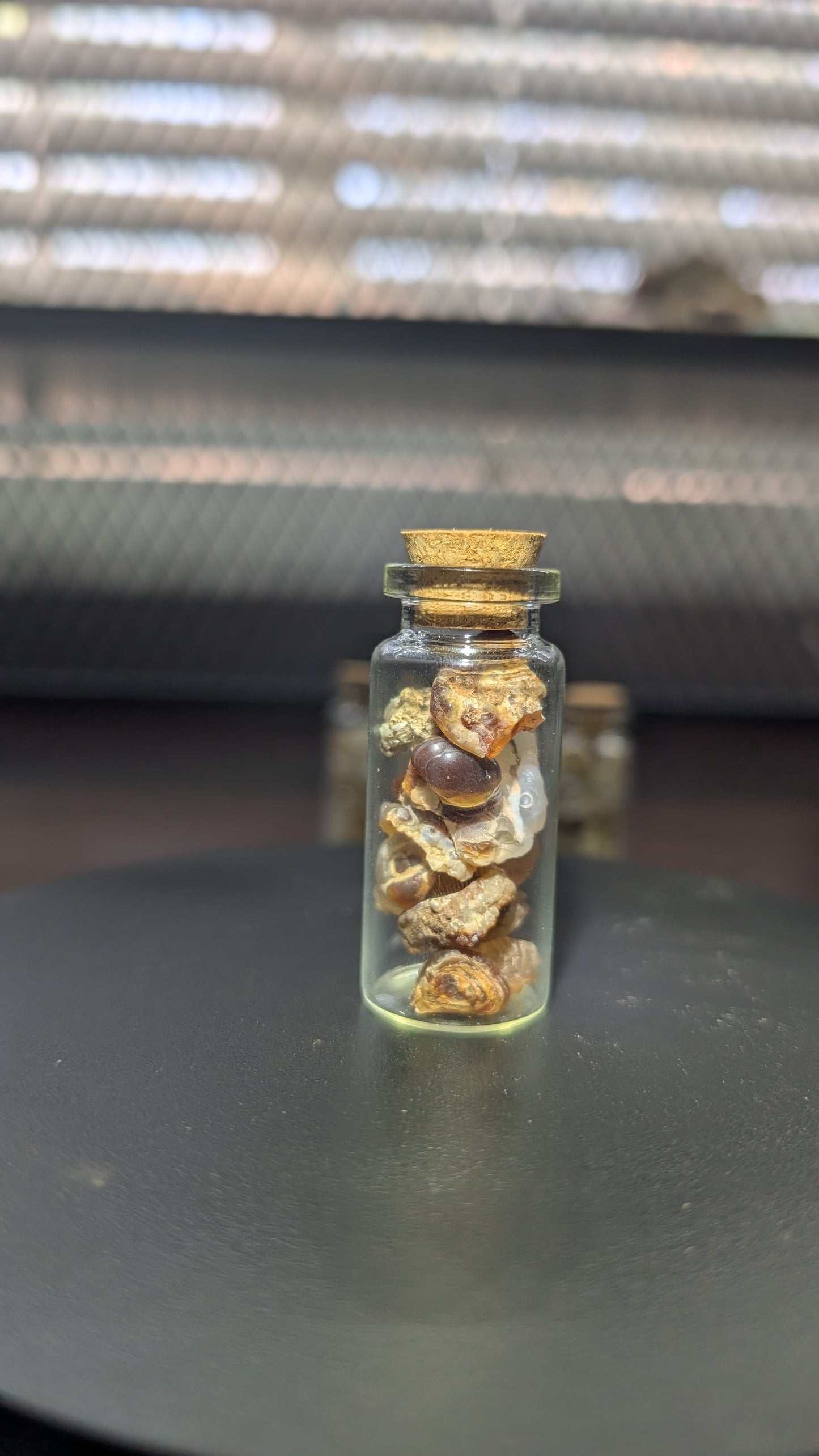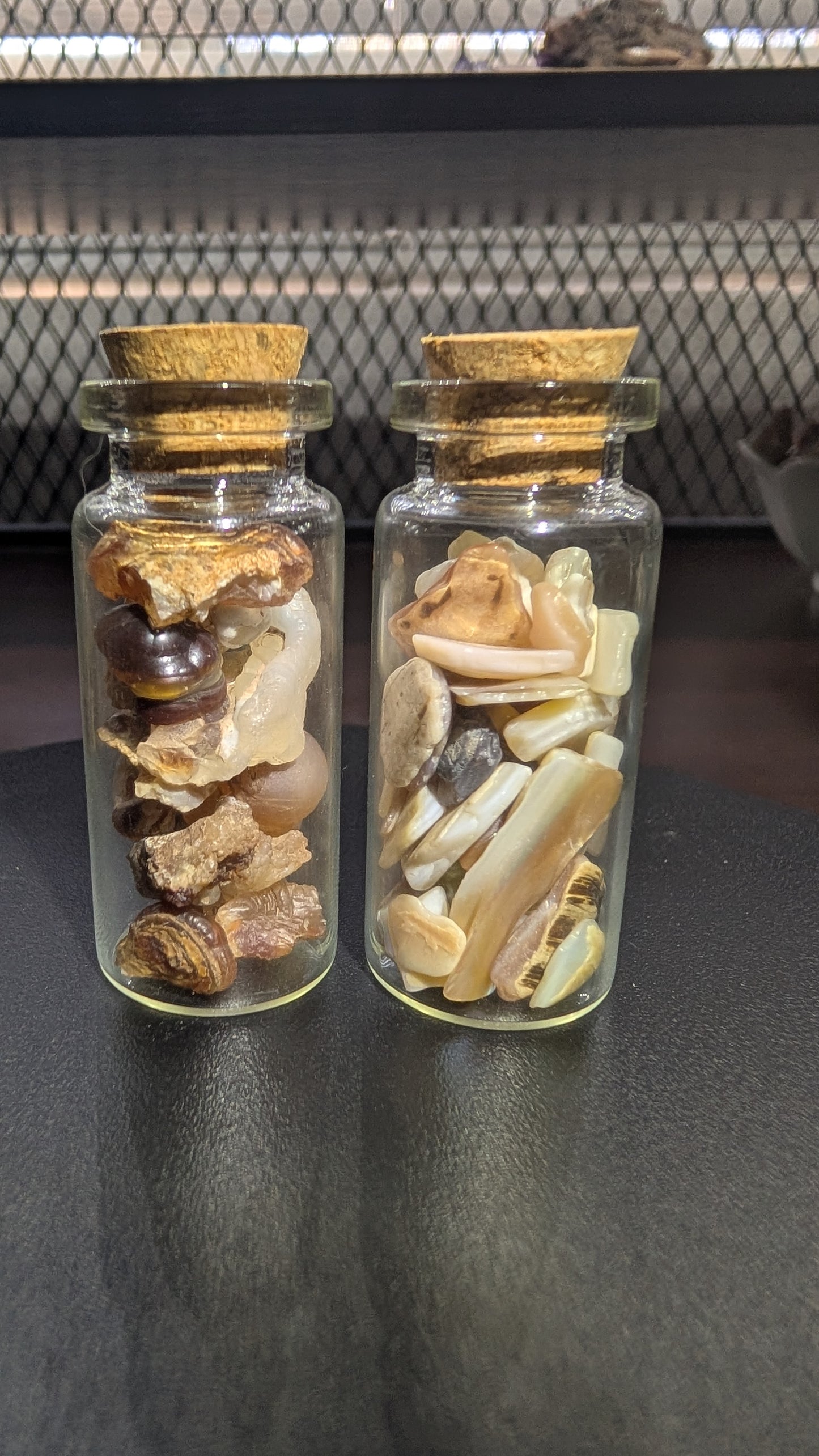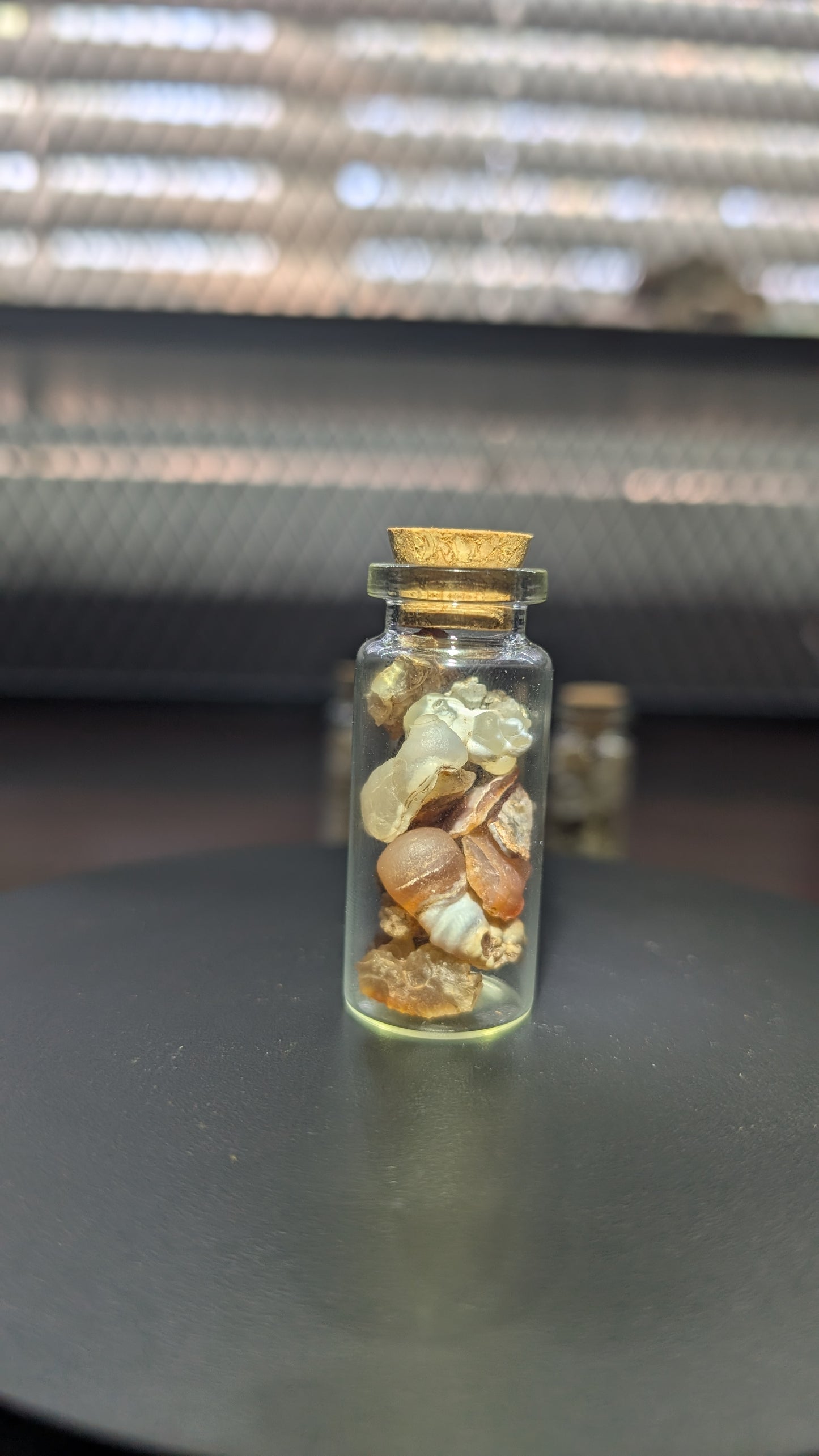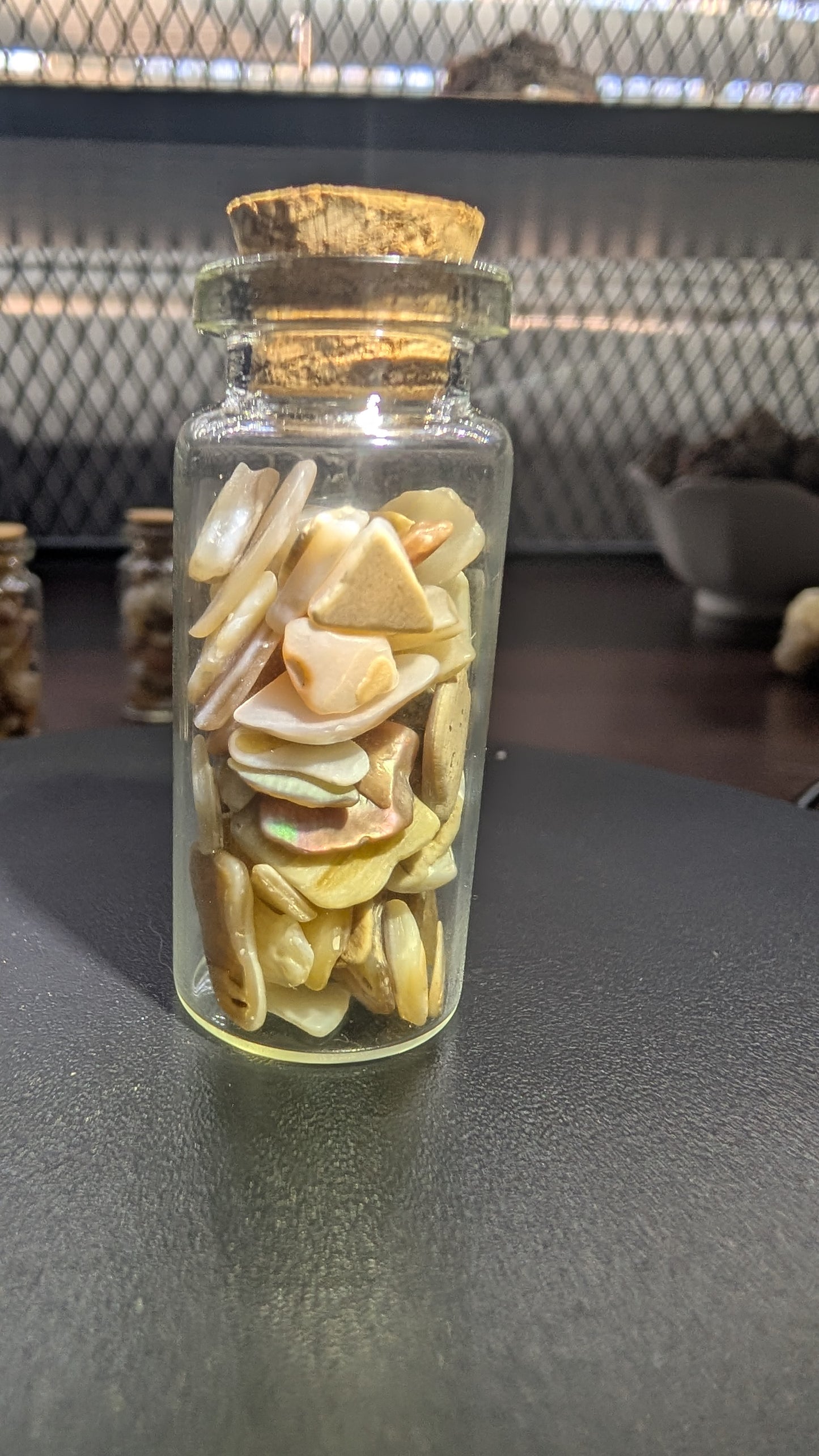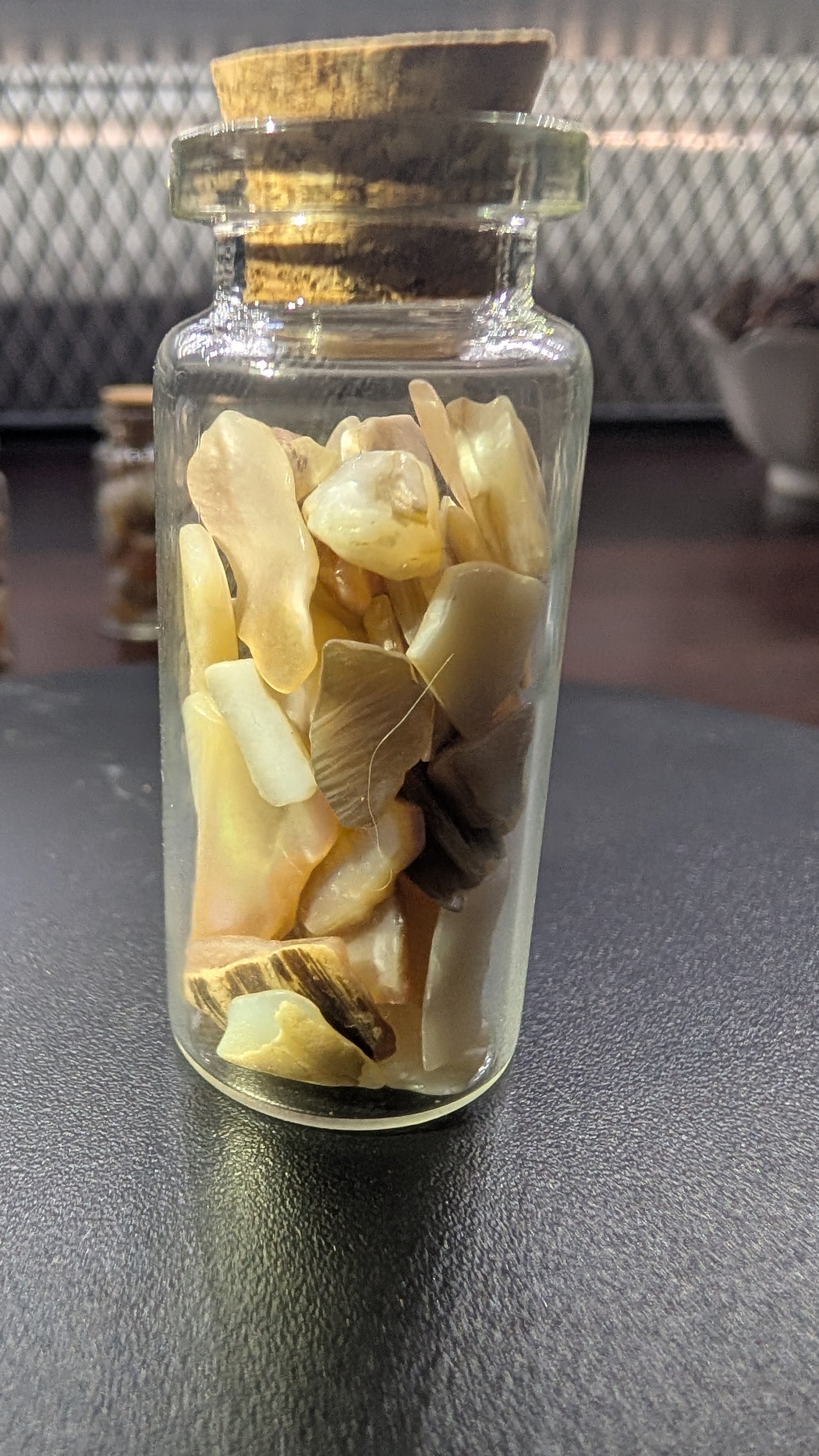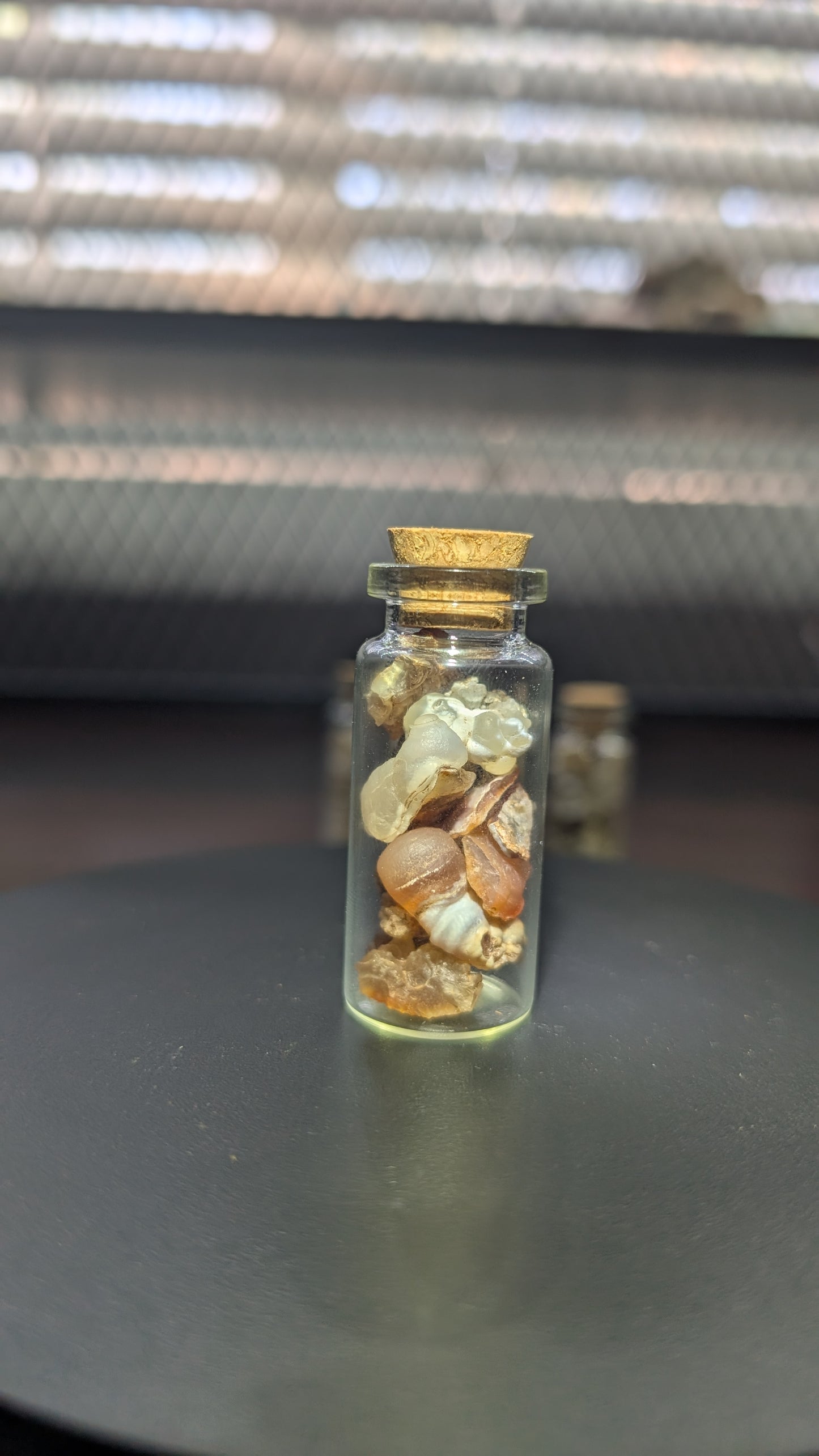Auglocqnuk's Treasures
1oz Jar of Fire Agate or Sea Shells
1oz Jar of Fire Agate or Sea Shells
Couldn't load pickup availability
Get two or more for a discounted price! Mix and match with 1oz Sea Shell Jar
What's in the Jar?
Each jar comes with 1oz of either fire agate or sea shells. If you buy two or more, you receive a discounted rate. Even if you mix and match!
| Hold a piece of the Arizona sunset in your hands. Sourced directly from the ancient volcanic fields of the Arizona desert, these 1 oz jars are filled with raw, unpolished fire agate.
Hidden within these natural stones is the coveted 'fire'—a breathtaking, iridescent rainbow that flashes with reds, golds, and greens as it catches the light. Each piece is a unique geological treasure, waiting for a lapidary artist to unlock its inner brilliance or a collector to admire its raw, untamed beauty. Perfect for jewelry making, crystal grids, or simply as a stunning natural specimen, this fire agate offers a direct connection to the volcanic energy of the desert. Don't miss your chance to own a spark of the earth's inner fire. Claim your 1 oz jar today and let the discovery begin! How is Fire Agate Formed? Fire agate forms through a complex geological process initiated by massive volcanic activity that occurred approximately 24 to 36 million years ago during the Tertiary Period. This activity created volcanic rocks, such as basalt, which contained cavities or vesicles formed by trapped gases during the cooling of lava. Over time, hot, silica-rich hydrothermal fluids, saturated with dissolved minerals like iron oxide (commonly in the form of goethite or limonite) and silica, percolated through the cracks and fissures of these volcanic rocks and filled the cavities. As these fluids cooled and slowly evaporated, they deposited thin, alternating layers of chalcedony (a microcrystalline form of quartz) and platy crystals of iron oxide onto the cavity walls. This layering process, which can occur over millions of years, results in the characteristic botryoidal (grape-like) or massive forms of fire agate. The vibrant, iridescent colors, often described as "fire," are not due to the minerals themselves but are caused by the Schiller effect, where light diffracts and interferes as it passes through these microscopic, alternating layers of silica and iron oxide, producing a shimmering rainbow effect similar to that seen in mother-of-pearl or opal. The specific combination of volcanic activity, the presence of silica and iron oxide, and the precise conditions for layer deposition are rare, which explains why fire agate is found only in specific regions of central and northern Mexico and the southwestern United States. Does Fire Agate Possess any Metaphysical properties? Fire Agate is believed to possess several metaphysical properties, primarily associated with the Root, Sacral, and Solar Plexus chakras, as well as the Earth Star chakra. It is believed to enhance inner fire, passion, motivation, and vitality, making it a powerful stone for stimulating creativity, energy, expression, and willpower. The stone is believed to awaken the lower chakras, igniting one's life force, creativity, sexuality, and will, while also helping to bring focus back to one's divine life purpose and increase the pleasures of everyday life. It also promotes passion in love and in life, supports romantic relationships, and helps attract new ones through its attractive nature. Fire Agate is also considered a protective stone that inspires authenticity and provides a sense of strength and security, shielding the emotional body from negative energies. It is said to release negative emotions, energy imbalances, and help individuals overcome fears and obstacles, fostering courage and a grounded sense of self. The stone is linked to the elements of Earth, Water, and Fire, and is associated with numerology 9 and zodiac signs Leo, Sagittarius, and Gemini. |
Here in Tucson, the coast feels a world away, but this 1 oz jar brings its magic to home. That's why we've decided to share that feeling with the world. Inside, you'll find a curated collection of genuine, iridescent sea shells, each shimmering with the ethereal luster of mother-of-pearl. Watch as they catch the light, flashing with soft hues of pink, green, and blue—like tiny captured rainbows. These beautiful shell fragments are perfect for adding a touch of coastal elegance to your jewelry making, resin art, or home decor. Sprinkle them into a small vase or display the jar on your desk for a daily reminder of the sea's serene beauty. Bring the cool, calming shimmer of the waves into your desert home. Order your jar of ocean treasure today! How are Sea Shells Formed? Sea shells are formed by marine mollusks as a protective exoskeleton. The primary material is calcium carbonate (CaCO3), which exists in crystalline forms like aragonite and calcite, providing the shell's hardness and rigidity. This process is continuous and is managed by a specialized tissue layer called the mantle, which secretes calcium carbonate and an organic matrix, primarily conchiolin protein, to build the shell from the inside out. Growth occurs at the shell's edge, where new material is added as the mollusk grows, and the shell thickens on the inner surface, creating visible growth lines similar to tree rings. Unlike crustaceans, mollusks retain and expand their shells throughout their lives, making the shell a living, growing part of the animal. Beyond their biological function of protection from predators, environmental stressors like desiccation and strong currents, and providing structural support, the shell's form is dictated by the mollusk's genetics and influenced by environmental factors such as water temperature, mineral availability, and diet. The intricate patterns and shapes often follow mathematical principles, such as the logarithmic spiral seen in the Nautilus shell, which is a hallmark of natural design. Do Sea Shells Possess any Metaphysical properties? Metaphysically, sea shells are considered powerful symbols with deep spiritual significance across cultures. They are associated with the element of Water, Venus (the planet and deity of love), and the Moon, reflecting their origin in the ocean and their connection to tides. Shells are seen as symbols of independence, solitude, self-reliance, and the feminine principle, with their shapes often evoking the vulva or breasts, a connection cemented by artistic depictions like Botticelli's "The Birth of Venus". The act of holding a shell to the ear and hearing the ocean is a common metaphor for connecting with the subconscious or the divine. Different shells carry specific spiritual properties. Abalone shells, known for their iridescent nacre, are linked to abundance, peace, compassion, and emotional healing, and are often used in smudging rituals. The Scallop shell is a sacred emblem in Christianity, symbolizing pilgrimage and spiritual quest, and is associated with the sea goddesses Aphrodite and Poseidon. The Nautilus shell, with its logarithmic spiral, represents growth, renewal, and spiritual expansion, and is a symbol of the infinite. Cowrie shells are widely used as symbols of wealth, fertility, and good luck, and are employed in divination practices across African and Afro-Caribbean traditions. The Auger shell, with its pointed, elongated shape, is associated with Mars and is used in protective charms and headdresses. Overall, seashells are believed to transmit calming vibrations, promote confidence, cleanse negative energy, and aid in emotional healing and chakra alignment, often used in jewelry or ritual objects. |
Share
